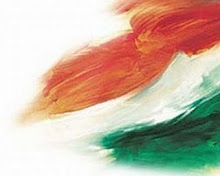Alice Seabold’s second novel Lovely Bones (2002), having sold over a million copies is a narrative piece in the voice of the protagonist. It has been proclaimed the masterstroke amongst Seabold’s three novels, her first one being called Lucky (1999) and the most recent one – The Almost Moon (2007).
Oblivious of any snare, Susie Salmon takes a shortcut to school in suburban Philadelphia on 6th December, 1973 – the day she is brutally raped and murdered by her ‘unassuming’ neighbor, Mr. George Harvey. The story enfolds as Suzie looks down on those dearest (upon those might have negative connotations) to her from, not quite in heaven, but somewhere in between. Battling emotions puts Susie in a mire: Can she accept her family moving on from the tragedy of her death? And can she come to terms with her own demise while her murdered still roams unpunished? The story is spread across a number of years and traces the hardships Susie’s family faces while attempting to heal their wounds; the greatest, but not the solitary one, being her death. The narration gives the reader glimpses into the lives of several characters through Susie’s memories and thoughts while she looks on from her perch up above.
The text is layered and bestirring. Seabold’s illustration of emotion is amplified by her attention to detail, and the characterization of that which is mundane and habitual as almost divine. Be it sheer strength of a father’s love for his daughter, the perplexity of teenagers, infidelity of a mother and the enigma of a murderer – The author paints vivid, and often poignant, pictures.
Afterlife is a theme which flows through the book. At one point in the book Susie Salmon says ‘I wasn’t lost, or frozen, or gone… I was alive; I was alive in my own perfect world.’ Susie cannot pass over to heaven until she is at peace with herself. At the same time, she describes herself as the air of the cold winter surrounding her first and only love, Ray Singh. This depiction of life after death has sparked of many a debate. While there is a staunch opposition, there are still more proponents of it. Since the heaven described in the book is Susie’s personal heaven, some are critical of the lack of affiliation to any religion or God. Alice Seabold herself raised an Episcopalian commented, “To me, the idea of heaven would give you certain pleasures, certain joys – but it’s very important to have an intellectual understanding of why you want those things. It’s also about discovery, and being able to come to the conclusions that elude you in life. So it’s from the most simplistic things – Susie wants a duplex – to larger things, like being able to understand why her mother was always slightly distant from her”. She also added that the book was not intended to have religious connotation and spoke about separate themes. However, as with all literature, Lovely Bones open to interpretation by her readers.
Lovely Bones, in my own interpretation, evoked a positive reaction because it somehow made helplessness and grief appear sublime and beautiful simultaneously. While being a bestseller, however, it has still received mixed reviews from the critics. The question is, does the book cinch it for you? Check out Lovely Bones, at the nearest bookstore.


